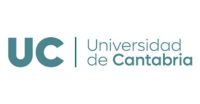T lymphocytes are blood cells whose mission is to destroy the malignant cells that affect our organism. They fight against diseased cells that sometimes originate in organs or those that have been infected by viruses. However, when they undergo certain genetic alterations they can cause tumors such as peripheral T-cell lymphomas, which have a very high mortality rate.
In addition to their aggressiveness, another reason that hinders their treatment is that they are not easy to identify. Usually 30% are diagnosed as T-lymphomas of unclear origin.
This week, an international group of scientists, in which IDIVAL participates, has published in the prestigious journal PNAS the results of a study that identifies several of these altered genes in T-cell lymphomas of unclear origin.
One of them is the proto-oncogene VAV1, which is usually found with genetic alterations in 12% of the patients analyzed. The same gene appears at lower frequencies (between 3% and 7% of cases) in another tumor with similar malignant properties, angioinmunoblastic T-cell lymphoma.
“The interesting thing is not only the fact that we have found mutations with high frequency in the VAV1 gene in these tumors, but also that many of these originate hyperactive molecules that probably contribute to the development of this type of tumor”, explains Xosé R. Bustelo, a scientist of the CIC and one of the authors of the work.
In addition, advancement may aid in the treatment of this lymphoma with drugs: “Since the VAV1 oncoprotein has a biological activity that is potentially feasible to be inhibited by drugs, these findings also establish a potential target for the development of more effective pharmacological treatments,” Says Javier Robles, researcher of the Bustelo team.
Numerous genetic alterations
In any case, one of the difficulties to be faced is that these tumors are very heterogeneous and have numerous genetic alterations. “Depending on the type of mutations they host, there will be patients who will exhibit different clinical behaviors in both their clinical course and response to treatments,” the authors write.
The complexity they describe implies that they should still continue research to extend the study to a large number of patients, so that they can assign to each molecular signature a specific clinical behavior.
The work is coordinated by Spanish researchers Teresa Palomero and Adolfo Ferrando, whose research groups are at the Institute for Cancer Genetics at Columbia University in New York. Also participating are centers such as the Institute of Biomedical Research Pi i Sunyer of Barcelona and IDIVAL the Institute of Sanitary Research of Valdecilla of Santander, among others.





















